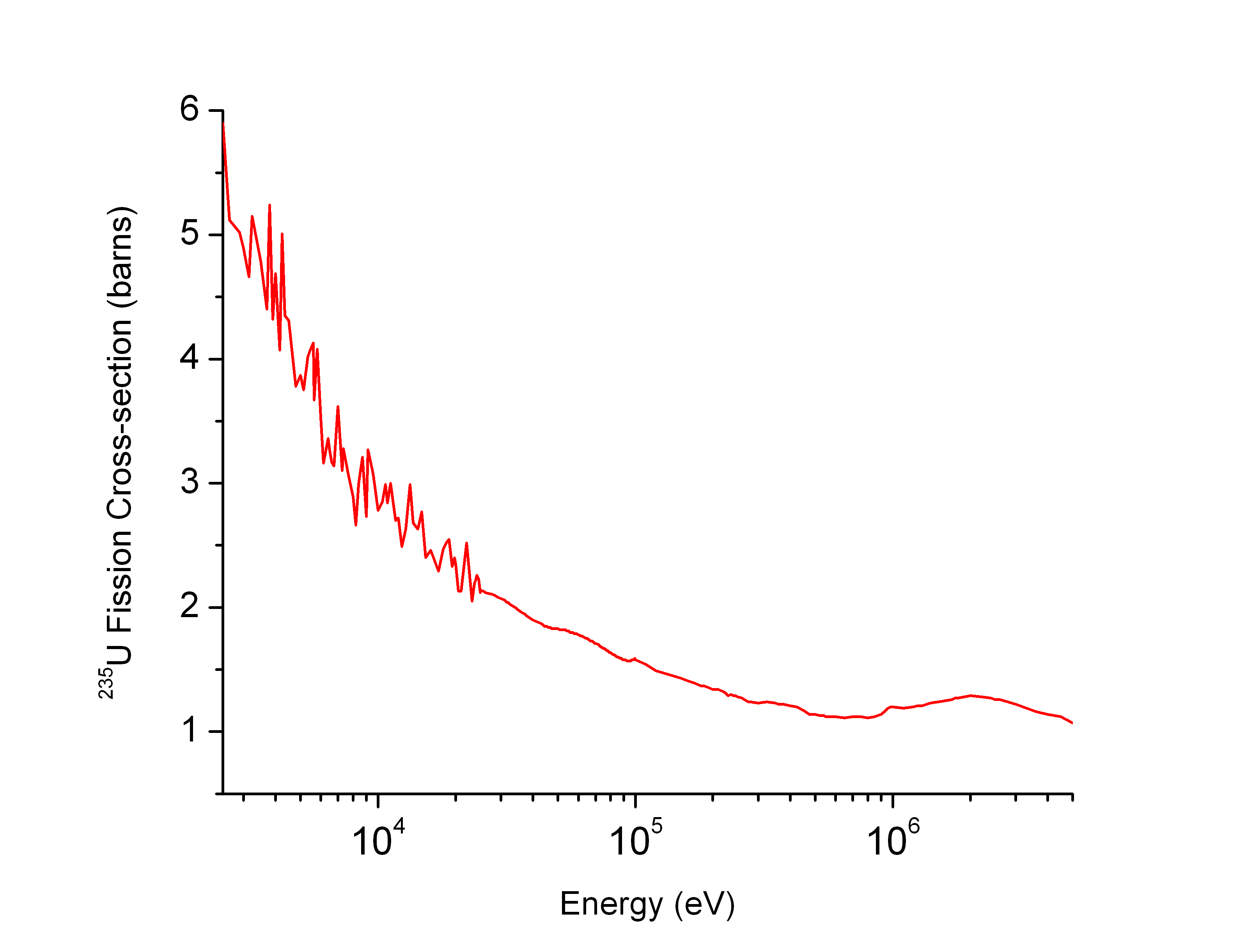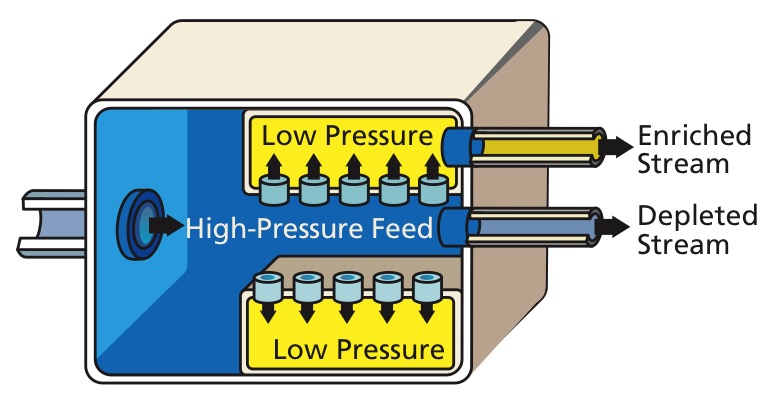This isotope shows up as an inevitable contaminant in Plutonium-239 for nuclear weapons, because it emits neutrons too fast and makes it harder to assemble the critical mass without fizzle.
It is the presence of this contaminant that made implosion-type fission weapon a necessity: Section "Gun-type fission weapons don't work with plutonium".
Plutonium-240 is a contaminant.
These are neutrons that have reached the thermal equilibrium according to the Maxwell-Boltzmann distribution after having bounced around many times without undergoing neutron capture.
Good fissile material is material that is able to absorb thermal neutrons and continue the reaction, because that's the type of neutron you end up getting the most of.
This isotope separation method was the first big successful method, having been used in the Manhattan Project, notably in the K-25 reactor.
This method was superseded by the more efficient gas centrifuges.
Comptes rendus de l'Académie des Sciences by  Ciro Santilli 37 Created 2024-08-14 Updated 2025-07-16
Ciro Santilli 37 Created 2024-08-14 Updated 2025-07-16
Apparently there were biweekly reports, that were grouped and published biannually on January and July, each one with a sequential tome number.
For example, both Marie Curie's Polonium paper and Marie Curie's Radium paper were published in the second half of 1898 and fell in tome 127.
Public domain publication list: archive.org/search?query=comptes+rendus+academie+des+sciences&sort=-date&and%5B%5D=collection%3A%22pub_comptes-rendus-hebdomadaires-academie-des-sciences%22 but some years are randomly missing like 1898?
OK from here you can find all of them more clearly: www.academie-sciences.fr/en/Transmettre-les-connaissances/comptes-rendus-de-l-academie-des-sciences-numerisees-sur-le-site-de-la-bibliotheque-nationale-de-france.html
The RaLa Experiment by Our Own Devices
. Source. Has some good mentions of Uranium vs Plutonium in nuclear weapon design.Bibliography:
- Open Q&As:
- Closed Q&As:
There are unlisted articles, also show them or only show them.


